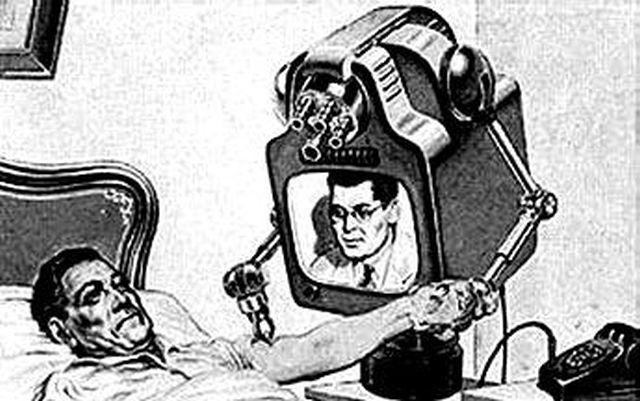Advantages of Using Teledoctors for Remote Medical Consultations
Advantages of Using Teledoctors for Remote Medical Consultations
Blog Article
Teledoctors: Connecting the Gap Between People and Doctor
The development of teledoctors represents a significant change in the medical care landscape, supplying remedies to long-lasting availability issues faced by carriers and individuals alike. By integrating telemedicine into traditional methods, medical care systems can reach underserved and remote populaces, offering crucial clinical examinations without the barriers of range and travel. This standard shift not just improves patient involvement but additionally enhances source allowance for suppliers. Nevertheless, the widespread fostering of teledoctors raises crucial questions concerning the sustainability of such practices and the effects for future healthcare shipment. What difficulties exist ahead in ensuring this design's effectiveness and equity?
Rise of Telemedicine

The rise of telemedicine is also fueled by the requirement for economical health care. Health care systems worldwide are under pressure to reduce expenses while keeping top quality care, and telemedicine offers a viable solution. By decreasing the demand for physical sees, telemedicine minimizes above costs for medical care centers and ultimately lowers the financial concern on patients.
In Addition, the COVID-19 pandemic functioned as a catalyst, increasing the fostering of telemedicine practices. Social distancing actions and the requirement to reduce direct exposure risk necessitated a change towards remote assessments, motivating governing bodies to sustain and adapt telehealth solutions. This change has not just tested telemedicine's efficacy however also its possible to evolve as a staple part of modern medical care systems.
Advantages for Clients
Primarily, telemedicine enhances accessibility, enabling individuals in underserved or remote locations to consult healthcare suppliers without the demand for considerable traveling. Telemedicine additionally offers patients the comfort of obtaining clinical recommendations and therapy from the convenience of their homes, minimizing the time and price linked with taking a trip to a health care facility.
Furthermore, telemedicine supports connection of care by promoting regular follow-ups and monitoring, which are essential for managing chronic problems. People can conveniently arrange visits and gain access to healthcare services outside typical workplace hours, fitting their hectic lifestyles. This adaptability brings about enhanced client engagement and adherence to therapy strategies, potentially resulting in far better wellness results.
Additionally, telemedicine can aid alleviate the danger of infection transmission, a concern enhanced by the COVID-19 pandemic. By lessening the requirement for in-person check outs, patients can stay clear of congested waiting rooms and lower exposure to contagious ailments. Eventually, moved here telemedicine equips individuals by offering prompt, effective, and individualized healthcare solutions.
Advantages for Companies
For doctor, telemedicine provides substantial benefits that improve the efficiency and reach of their method. By leveraging electronic technology, carriers can prolong their solutions to a broader market, consisting of those in remote or underserved locations. This not just eases geographical barriers however additionally optimizes individual retention and procurement by making healthcare a lot more accessible.
With telemedicine, the demand for physical space decreases, allowing suppliers to conserve on actual estate and functional expenditures. This adaptability can lead to increased patient appointments per day, thereby increasing revenue potential.
Telemedicine also fosters an extra joint setting for doctor. teledoctors. It allows seamless sharing of person information amongst experts, enhancing diagnostic precision and therapy results. Furthermore, digital systems can incorporate with electronic wellness documents (EHRs), enhancing data precision and enhancing administrative tasks
In addition, telemedicine enhances client complete satisfaction, which is essential for service provider online reputation and success. By supplying prompt and convenient care, carriers can improve client commitment and interaction, further reinforcing the provider-patient relationship.
Overcoming Challenges
While telemedicine offers various benefits for medical care companies, it additionally provides obstacles that require careful consideration. Health care providers should adhere to rigid laws like HIPAA to protect delicate information, thus needing financial investment in safe and secure systems and recurring staff training. teledoctors.
Another challenge is the digital divide, which can hinder access to telemedicine services. Not all people have equivalent accessibility to the necessary technology or internet connectivity, particularly those in rural or underserved areas. This disparity can exacerbate existing healthcare inequalities, making it crucial for service providers to check out alternative services, such as partnerships with community companies, to link this void.
Moreover, there are restrictions in carrying out checkups remotely. Specific problems require in-person assessment, highlighting the need for a crossbreed design that integrates telemedicine with traditional visits. Providers have to browse these difficulties by developing methods to recognize when telemedicine is appropriate and ensuring smooth shifts between digital and in-person care.
Future of Healthcare
The future of health care is positioned for a transformative evolution, driven by the fast assimilation of technology and development. This not just boosts client comfort view yet additionally expands access to medical care, specifically in underserved and rural areas.
Expert system (AI) and machine knowing are likewise readied to play crucial functions. These technologies can evaluate large quantities of information, supplying anticipating insights right into individual wellness, boosting analysis precision, and personalizing therapy strategies. AI-driven devices can augment healthcare suppliers' capacities, bring about even more enlightened decision-making and far better individual results.
Additionally, wearable modern technology and Internet of Medical Things (IoMT) tools are revolutionizing individual involvement and proactive health administration. These gadgets make it possible for continuous health tracking, permitting very early discovery of potential issues and timely interventions.
As these modern technologies remain to advance, they guarantee to develop a more efficient, available, and patient-centric health care system, eventually connecting the space between individuals and doctor. - teledoctors
Verdict
Teledoctors are changing healthcare by substantially improving access and performance via remote examinations. This improvement sustains individuals in underserved areas home by offering timely medical advice without requiring physical brows through, hence boosting individual interaction and continuity of care. Doctor gain from a lot more efficient time management and boosted partnership chances. Despite difficulties such as technological barriers and governing problems, the future of medical care shows up efficient and significantly comprehensive because of the integration of telemedicine right into standard care designs.

As telemedicine proceeds to reshape health care delivery, clients stand to obtain considerably from this makeover. Mainly, telemedicine improves accessibility, enabling people in remote or underserved locations to consult health care carriers without the need for substantial traveling. Telemedicine also offers individuals the comfort of obtaining medical guidance and therapy from the convenience of their homes, reducing the time and cost connected with taking a trip to a medical care center.
Ultimately, telemedicine empowers clients by supplying prompt, effective, and personalized health care solutions.
Report this page